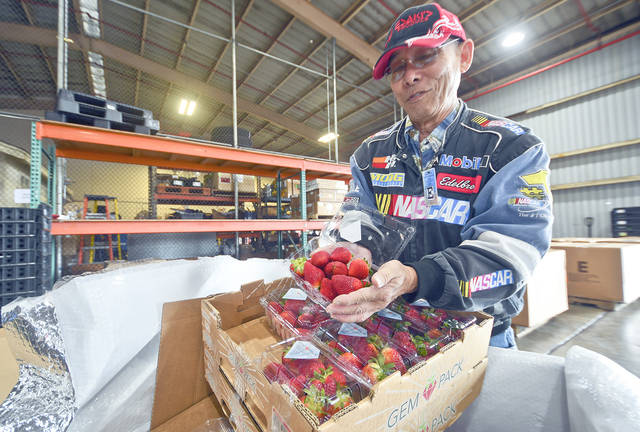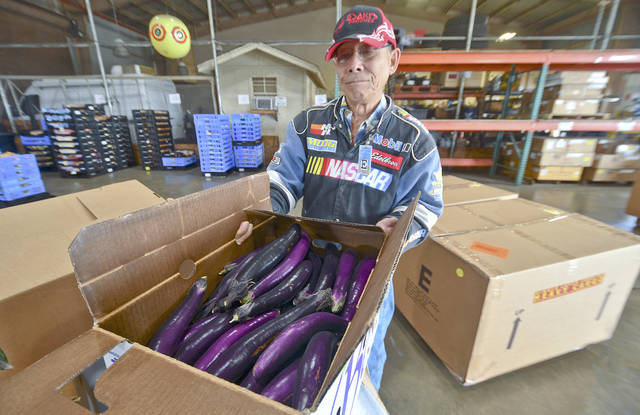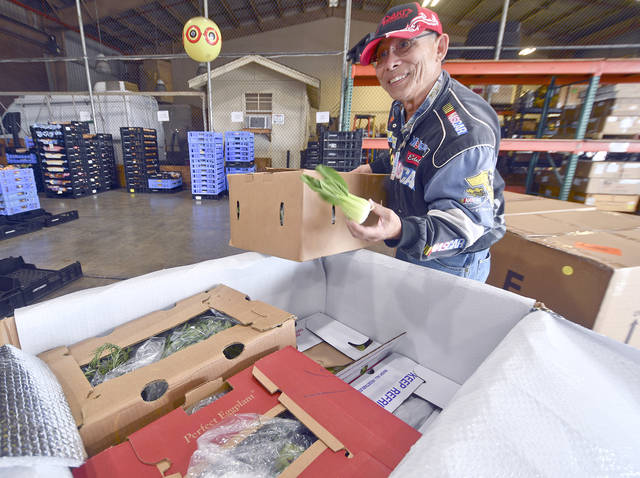LIHUE — Kauai’s grocers and produce distributors breathed a sigh of relief Friday as shipments landed on the island from the air and by sea.
“Our icebox is going to be full,” said Earl Kashiwagi, Esaki’s Produce manager, on Friday afternoon at Lihue Airport.
Esaki’s has been waiting for the airfreight shipment since Thursday, when it was supposed to be delivered from the mainland. The deliveries that arrived, however, were just from interisland airports.
Friday, however, Hawaiian Airlines cargo bay was stacked with special cardboard boxes that can be filled to about 200 pounds each and kept cold.
“We shipped over about 50,000 pounds in a week,” Kashiwagi said as he sliced into a box and revealed fresh strawberries, basil and other produce.
Mechanical issues and Pacific storms threw a wrench in barge shipping to Hawaii over the past month, with some stores on Oahu reporting empty shelves.
On Kauai, Esaki’s has been flying produce in to compensate for the delayed shipments — that’s why most shelves on the island have been able to stay fairly stocked with food.
The cost to ship airfreight can be as much as $1.25 per pound versus 30 cents a pound when shipping via barge, and Esaki’s took on that extra cost to be able to keep produce on the shelves and in the hotels and restaurants while barges were delayed.
Esaki’s management considered the cost conundrum and realized they had two options — leave the produce in California and take a loss, or ship it over via airfreight and pay more.
They chose airfreight, and chose to foot the extra cost themselves.
“At least we keep our customers happy,” Kashiwagi said.
Over at Safeway, spokeswoman Wendy Gutshall said the grocer has been experiencing a slight delay in shipping as well, but shelves were chock-full for the weekend.
“We are working diligently to meet the needs of our customers, and we anticipate to receive additional replenishment for items like milk starting today,” Gutshall said Friday.






All those types of produce can be grown and farmed on former sugar plantation fields that are being developed for residential housing. Once a development takes place and is covered with concrete and asphalt, you can’t farm anymore.
People should demand that fresh fruits and vegetables be locally grown, with the excess that are not up to grade be given to feed the homeless and those who cannot afford paying for food at the local market. Its a shame with so much former sugar cane fields just getting over grown with weeds and shrubs when it could be producing fresh produce.